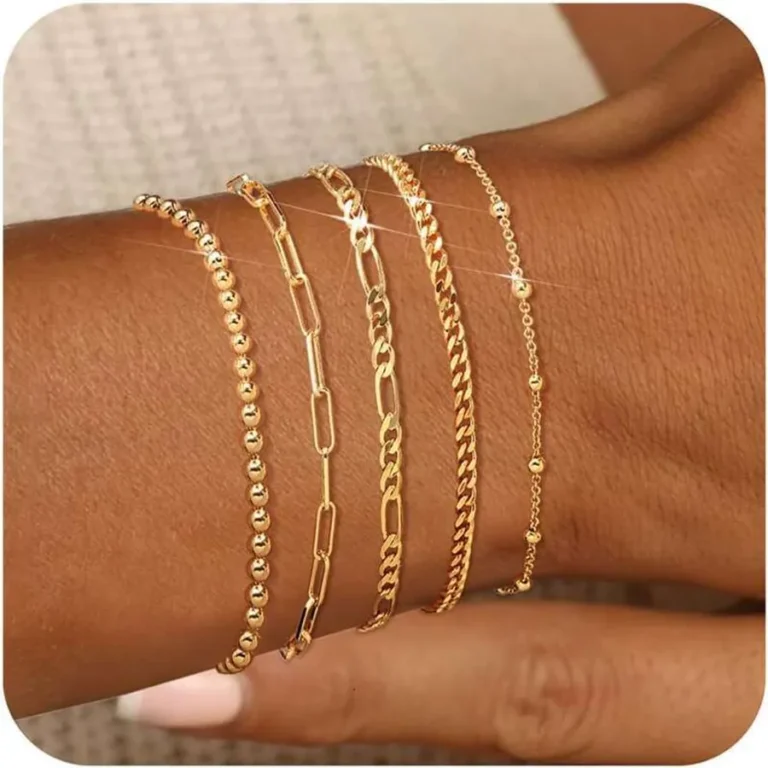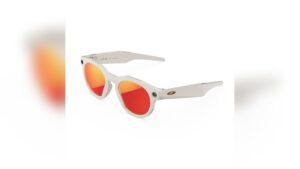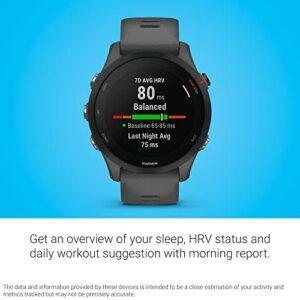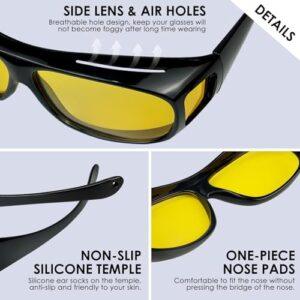Have you ever put on a bracelet only to find it too tight or slipping off your wrist? Getting the right fit isn’t just about comfort—it changes how your bracelet looks and feels every day.
You might be surprised how a small adjustment can make a big difference in style and confidence. Keep reading to discover exactly how bracelets are supposed to fit and why it matters for you.

Credit: smart.dhgate.com
Choosing The Right Size
Choosing the right bracelet size is key for comfort and style. A bracelet that fits well feels natural on your wrist. It should not be too tight or too loose. Knowing how to measure and understand sizes helps you pick the best one. This guide explains how to find your perfect fit.
Measuring Your Wrist
Use a soft measuring tape to measure your wrist. Wrap it around the wrist bone. Keep the tape snug but not tight. Note the measurement in inches or centimeters. Add about half an inch for comfort. This extra space prevents the bracelet from feeling too tight.
Standard Bracelet Sizes
Bracelet sizes usually range from 6 to 8 inches for women. Men’s sizes often range from 7 to 9 inches. These sizes may vary by brand or style. Always check size charts before buying. Knowing your wrist measurement helps you pick the right size.
Adjustable Vs Fixed Bracelets
Adjustable bracelets offer flexibility in size. They fit a range of wrist sizes comfortably. Fixed bracelets have a set size and shape. You must choose the correct size for fixed bracelets. Adjustable ones are ideal for uncertain sizes or gifts.

Credit: smart.dhgate.com
Comfort Factors
Comfort is the key when choosing the right bracelet fit. A bracelet should feel good on your wrist all day. It should not pinch or slide off. Comfort depends on several factors. Let’s explore these to help you wear your bracelets with ease.
Avoiding Tightness
A bracelet that is too tight can hurt your skin. It may leave marks or cause discomfort. Avoid bracelets that squeeze your wrist. There should be enough space to fit a finger under the band. This space stops tightness and allows better blood flow.
Allowing Movement
Your bracelet should move slightly on your wrist. Too loose means it might fall off. Too tight means no movement and discomfort. A little wiggle room keeps the bracelet comfortable. It also stops skin irritation from constant rubbing.
Material Impact On Comfort
The material of the bracelet affects how it feels. Soft materials like leather or fabric feel gentle on skin. Metal bracelets can feel heavy or cold. Choose materials that suit your skin type. Some materials can cause allergies or irritation. Test the bracelet before long wear to check comfort.
Style And Fit Balance
Finding the right balance between style and fit is key to wearing bracelets well. A bracelet should look good and feel comfortable. It should not be too tight or too loose. Style and fit work together to make your bracelet a perfect accessory.
Stacking Multiple Bracelets
Wearing several bracelets can create a stylish look. Choose bracelets that vary in size and texture. Space them evenly on your wrist to avoid clutter. Make sure they do not slide too much. This keeps your stacked bracelets neat and cozy.
Matching Bracelet Width To Wrist Size
Thin bracelets suit smaller wrists best. Wide bracelets look better on larger wrists. A good fit means the bracelet should sit comfortably. It should not pinch or leave marks. Proper width keeps the bracelet balanced and attractive.
Complementing Your Outfit
Choose bracelets that match your clothing style. Simple bracelets go well with casual outfits. Bold pieces fit formal or dressy looks. Colors and metals should blend with your clothes. This harmony enhances your overall appearance.
Types Of Bracelets And Fit Tips
Bracelets come in many styles, and each type fits differently. Knowing how each bracelet should fit helps you wear it comfortably and look good. This section explains common bracelet types and offers simple fit tips for each.
Bangles And Their Fit
Bangles are solid circles that slip over your hand. They should fit loosely enough to slide on without forcing. Yet, they must not be so loose that they spin around your wrist easily. A good fit means the bangle rests comfortably without pinching your skin.
Chain Bracelets
Chain bracelets are flexible and made of linked metal pieces. They should fit close to your wrist but allow some movement. The bracelet must not feel tight or leave marks. A small gap between the bracelet and skin helps prevent discomfort during daily use.
Cuffs And Open Designs
Cuffs and open bracelets have a gap or opening for easy wear. These should fit snugly but not squeeze your wrist. You can gently adjust the opening for a better fit. The bracelet stays secure without pinching or sliding off your arm.
Common Fit Mistakes
Many people make common mistakes when choosing bracelet fit. These errors can cause discomfort or make the bracelet look odd. Understanding these mistakes helps you pick the right size and style. This section covers the most frequent fit problems and how to avoid them.
Wearing Too Loose Or Too Tight
Bracelets that are too loose slide around your wrist. They can catch on things or fall off. On the other hand, tight bracelets pinch your skin and limit movement. Both extremes cause discomfort. Aim for a fit that stays in place but feels comfortable.
Ignoring Wrist Shape
Wrists come in different shapes: round, flat, or bony. A bracelet that fits well on one shape may not suit another. Ignoring wrist shape can cause gaps or tight spots. Choose styles and sizes that match your wrist’s unique shape for a better fit.
Overlooking Bracelet Weight
Heavy bracelets need more support and a secure fit. Lightweight bracelets can handle a bit of looseness. Ignoring weight may lead to constant slipping or wrist strain. Consider the bracelet’s weight before deciding how tight it should be.
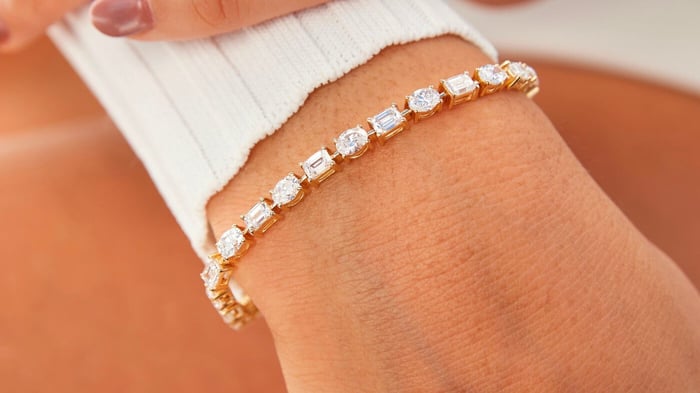
Credit: hautecarat.com
Maintaining Bracelet Fit Over Time
Keeping your bracelet fitting well over time is important. Bracelets can stretch, shrink, or change shape due to daily wear. Paying attention to these changes helps keep your bracelet comfortable and looking great. Small adjustments may be needed to maintain the perfect fit.
Adjusting For Wear And Tear
Bracelets can loosen or tighten with regular use. Metal links may stretch, and leather can stretch or shrink. Check your bracelet often. Tighten loose links or replace worn parts. These small fixes keep the bracelet secure and comfy.
Seasonal Fit Changes
Your wrist size can change with weather and activity. Heat can cause swelling, while cold may shrink your wrist. Try your bracelet on each season. This helps you notice if it feels too tight or loose. Adjusting fit during the year avoids discomfort.
Professional Resizing Services
Sometimes, bracelets need expert care. Jewelers can resize metal and chain bracelets safely. They use special tools to add or remove links. Professionals can also repair clasps or damaged parts. Visit a jeweler if you cannot adjust your bracelet yourself.
Frequently Asked Questions
How Tight Should A Bracelet Fit On Wrist?
A bracelet should fit snugly without squeezing your wrist. It should slide easily but not fall off. Aim for a comfortable fit that allows natural movement and prevents irritation.
Can Bracelets Be Adjusted For Different Wrist Sizes?
Yes, many bracelets come with adjustable links or clasps. This allows you to customize the fit for comfort. If not adjustable, a jeweler can resize it to fit perfectly.
What Bracelet Size Is Ideal For Daily Wear?
For daily wear, choose a bracelet that fits comfortably without restricting movement. A fit with slight looseness avoids skin irritation and allows for swelling during the day.
How Do I Measure My Wrist For Bracelet Fitting?
Use a flexible tape or string to measure around your wrist. Add about 0. 5 to 1 inch for comfort. This measurement helps find the best bracelet size for you.
Conclusion
Finding the right bracelet fit feels comfortable and looks good. It should sit snug but not tight on your wrist. A bracelet that moves too much can get lost or damaged. Too tight, and it may irritate your skin. Remember, different styles may need different fits.
Try adjusting your bracelet to see what feels best. A well-fitted bracelet enhances your style without causing discomfort. Keep these simple tips in mind when choosing your next bracelet. Enjoy wearing it every day with confidence and ease.

Madison Clark is a footwear expert and the voice behind MyStyleGrid.com. She specializes in honest shoe reviews, style tips, and practical guides to help readers find the perfect pair for any occasion. With years of experience in blogging and content creation, Madison makes footwear knowledge simple, stylish, and easy to follow.

